What Happens When a Belarusian Artist Brings Her Land to Austria? Cemra Talks About Art Residency in Graz
What Happens When a Belarusian Artist Brings Her Land to Austria? Cemra Talks About Art Residency in Graz
Interview | 11.07.2025
What is it like to go through the experience of a foreign art residency, and what happens when you carry your ideas about memory, soil, and language into a completely different cultural context? Cemra spent two months at the Graz International House of Authors, where she worked on her new project “ZIAMLIAČKA”. We spoke with her about why Graz reminds her of Hrodna (the artist's hometown), how she ended up singing in Belarusian with a Polish artist in Austria, and how the locals relate to Belarusian artists.
What is it like to go through the experience of a foreign art residency, and what happens when you carry your ideas about memory, soil, and language into a completely different cultural context? Cemra spent two months at the Graz International House of Authors, where she worked on her new project “ZIAMLIAČKA”. We spoke with her about why Graz reminds her of Hrodna (the artist's hometown), how she ended up singing in Belarusian with a Polish artist in Austria, and how the locals relate to Belarusian artists.
SHARE:
— How did you get into the residency?
— I was offered to join the Graz International House of Authors (IHAG) residency after a recommendation from one of the previous participants. The organizers also reached out to former Belarusian residents, and they confirmed my candidacy as well. Initially, I was invited for the winter period, but since I was waiting for some documents, my participation was postponed until spring. To be honest, I wasn't sure they even remembered me, so I was surprised when I received an official invitation just two weeks before the start.
— What was the most significant discovery during the residency?
— At first, I was quite nervous and didn’t understand how everything worked. They began introducing me to other participants from Switzerland and Mali, and I immediately had to start presenting my project. My English wasn’t strong enough, but I prepared thoroughly, and with each presentation, it got better. Later, I had meetings with galleries and curators, I didn’t expect such a strong reaction. The core idea that I had been keeping inside my works was understood immediately — it was astonishing. I heard so many sincere and profound responses for the first time. What surprised me most was the genuine interest in Belarus — people really care about the situation and look for ways to make an impact.
The first few weeks were transformative — I had arrived emotionally drained, even though I had just opened an exhibition. At the residency, for the first time, I found myself in an environment where I could recover: focus on myself, pause, reflect, and take my time. I worked on the project — wrote the theoretical part, prepared presentations, developed the exhibition plan, and gave a talk to art school students. For the first time, I was creating not from pain, but from wholeness, from inner calm. It was a completely new sensation.
— How did you get into the residency?
— I was offered to join the Graz International House of Authors (IHAG) residency after a recommendation from one of the previous participants. The organizers also reached out to former Belarusian residents, and they confirmed my candidacy as well. Initially, I was invited for the winter period, but since I was waiting for some documents, my participation was postponed until spring. To be honest, I wasn't sure they even remembered me, so I was surprised when I received an official invitation just two weeks before the start.
— What was the most significant discovery during the residency?
— At first, I was quite nervous and didn’t understand how everything worked. They began introducing me to other participants from Switzerland and Mali, and I immediately had to start presenting my project. My English wasn’t strong enough, but I prepared thoroughly, and with each presentation, it got better. Later, I had meetings with galleries and curators, I didn’t expect such a strong reaction. The core idea that I had been keeping inside my works was understood immediately — it was astonishing. I heard so many sincere and profound responses for the first time. What surprised me most was the genuine interest in Belarus — people really care about the situation and look for ways to make an impact.
The first few weeks were transformative — I had arrived emotionally drained, even though I had just opened an exhibition. At the residency, for the first time, I found myself in an environment where I could recover: focus on myself, pause, reflect, and take my time. I worked on the project — wrote the theoretical part, prepared presentations, developed the exhibition plan, and gave a talk to art school students. For the first time, I was creating not from pain, but from wholeness, from inner calm. It was a completely new sensation.
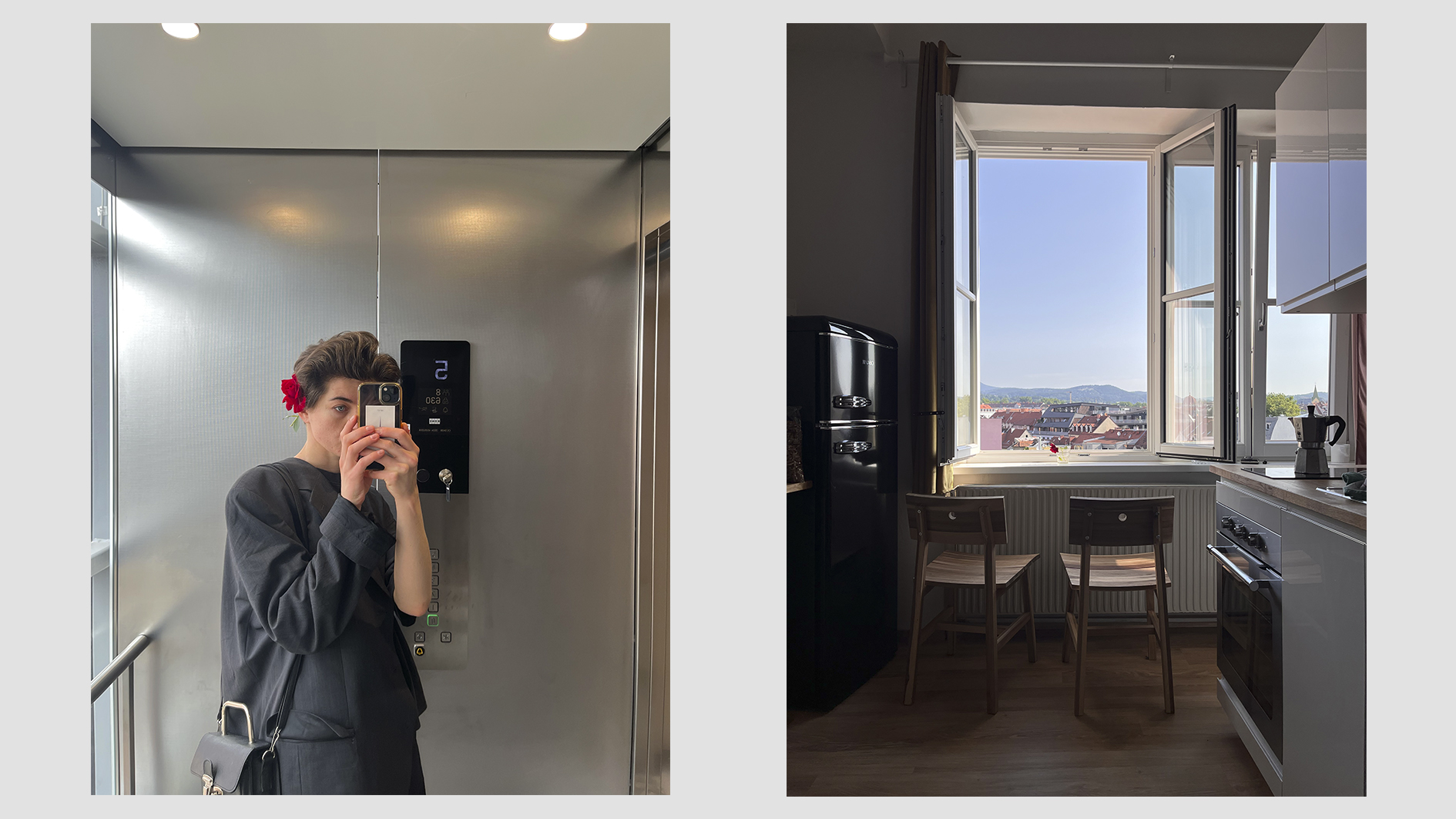
Photos of Cemra during her residency at the Graz International House of Authors (IHAG) / from the artist's personal archive / 2025.
Later on, I met musicians, master’s students, who introduced me to the local concert scene. Previously, I had only attended exhibitions, but in Graz I felt a true synthesis of the arts for the first time. The city is entirely imbued with creativity.
One of the many meaningful encounters was with a Polish artist who performs traditional funeral songs. She spoke Ukrainian and welcomed me warmly. We immediately agreed to sing together, and on the last day of the residency we performed a song: in Belarusian, Polish, and Ukrainian. It was a single piece, woven from all three languages. She told me that all her projects had only come to life in Graz, even though she was originally from Warsaw. At that moment, I realized how important it is to be in an environment that nurtures your growth.
— What was your experience of living in Austria?
— Graz is very similar to my native Hrodna in both size and rhythm. I felt at home there. That feeling hasn’t left me since. The people reminded me of Belarusians: gentle, polite, intelligent, very punctual. I lived alone in a bright, renovated apartment with windows facing the mountains. The space helped me restore myself, allowed me to concentrate on my project and my future. When I arrived in Austria, my hands were clenched into fists (which says a lot about my state), but two weeks later, they were already open.
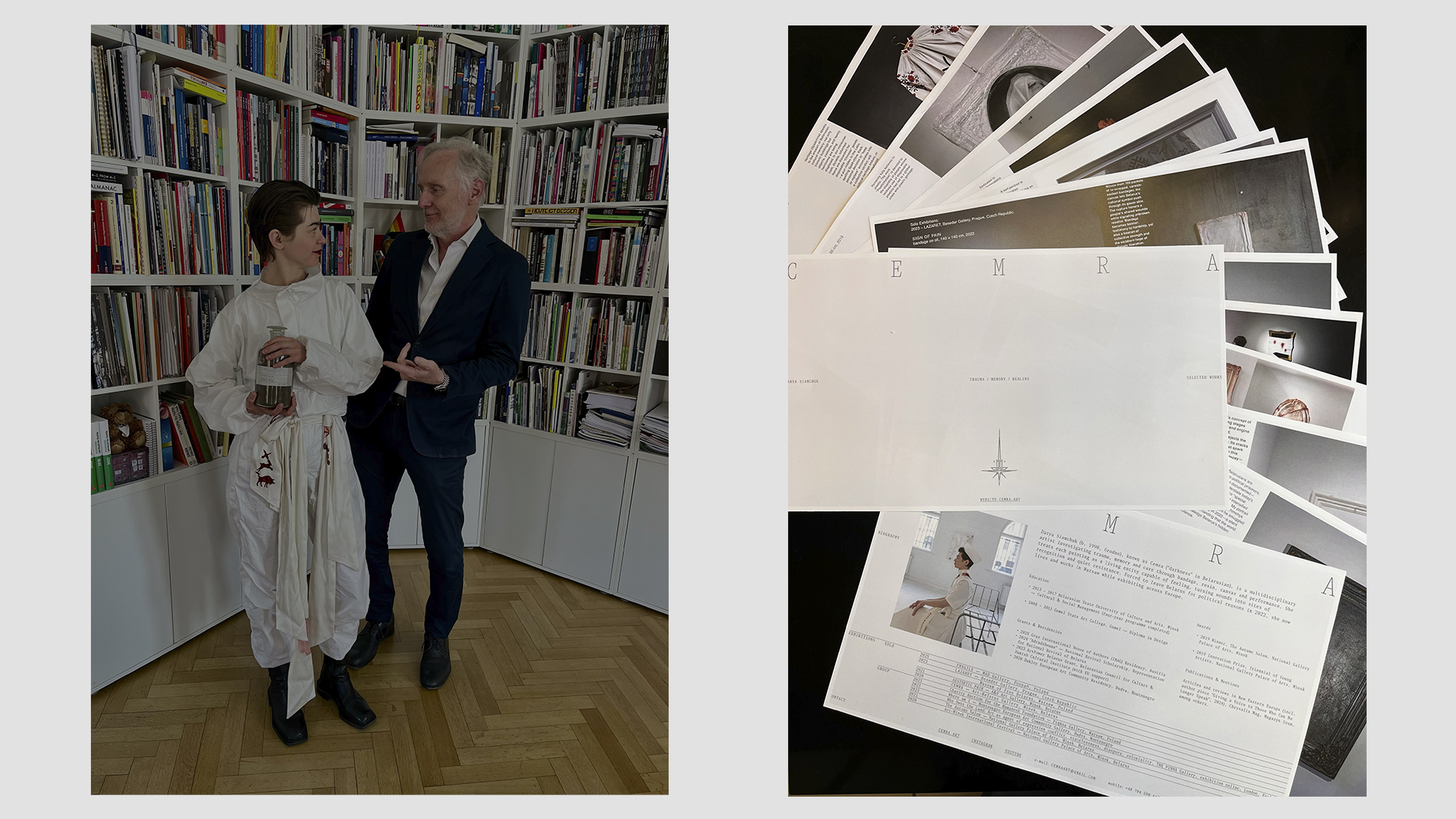
Photos of Cemra during her residency at the Graz International House of Authors (IHAG) / from the artist's personal archive / 2025.
— Did you fear being misunderstood?
— Yes, I did. I was anxious about both my professional and personal competence. But after a few meetings, I realized I couldn’t endure that level of anxiety for long. I just let go and was myself. It was incredible — to feel natural and to be accepted. At some point, I experienced a complete acceptance of myself — I had never felt that before.
— What is it like to be a Belarusian in a European residency?
— At the residency, they told me about Belarusians who had participated before, some of whom I had never heard of. It was strange to realize that in Austria they know more about our authors than I do. I actually liked being Belarusian in this context – people spoke warmly and respectfully about us. The participants were from different countries and continents, which created a real sense of being part of the world.
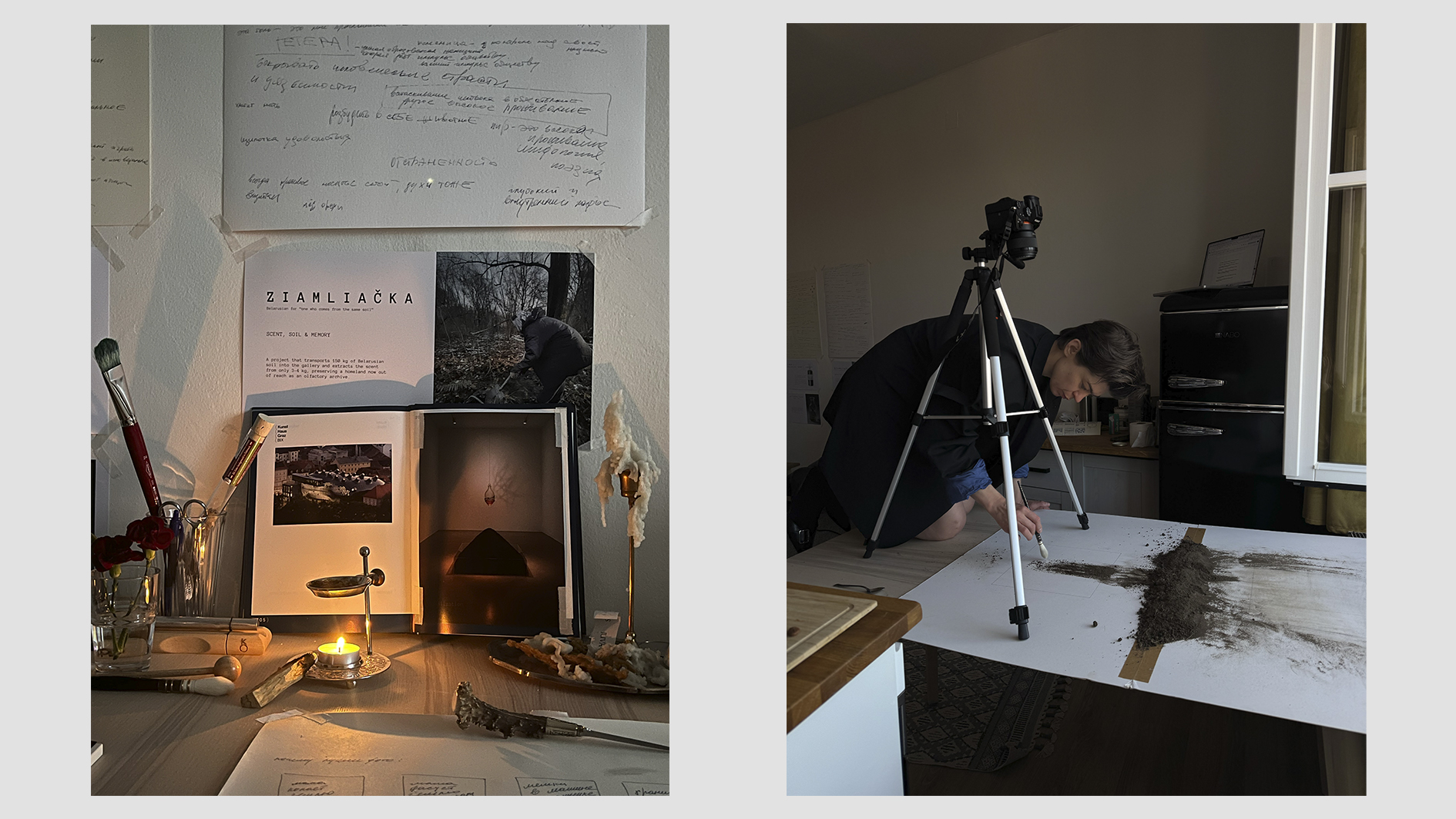
Photos of Cemra during her residency at the Graz International House of Authors (IHAG) / from the artist's personal archive / 2025.
— What kind of art accompanied you during this period? Any discoveries in cinema, exhibitions, books?
— I spent two days in Vienna: I visited the museum of contemporary art mumok, saw works by Egon Schiele, and went to the Kunsthistorisches Museum. For the first time, I seriously engaged with contemporary art — before, I had always lacked the time. I discovered the work of Mexican artist Teresa Margolles, and even though I encountered it only through reading, not visually, I had a powerful emotional reaction — I had to step to the window to breathe. I was deeply struck by her approach, her strength, and the precision of her expression. For the first time, I clearly saw the level I want to aspire to. It was the most emotionally powerful encounter with art in my entire life.
— Tell us about your future plans.
— I came back with a new understanding of myself and of art as a whole. I want to preserve what I’ve learned and realized. Staying grounded in Warsaw is already a challenge. I made an enormous number of personal notes — so many that I rolled them into a scroll. It turned out to be heavy, both literally and symbolically. It was a way to understand myself. That time was a real gift. And now it’s important that what I understood becomes rooted, only then can I move forward. But first, I need to finish what I’ve started. Only after that — something new.
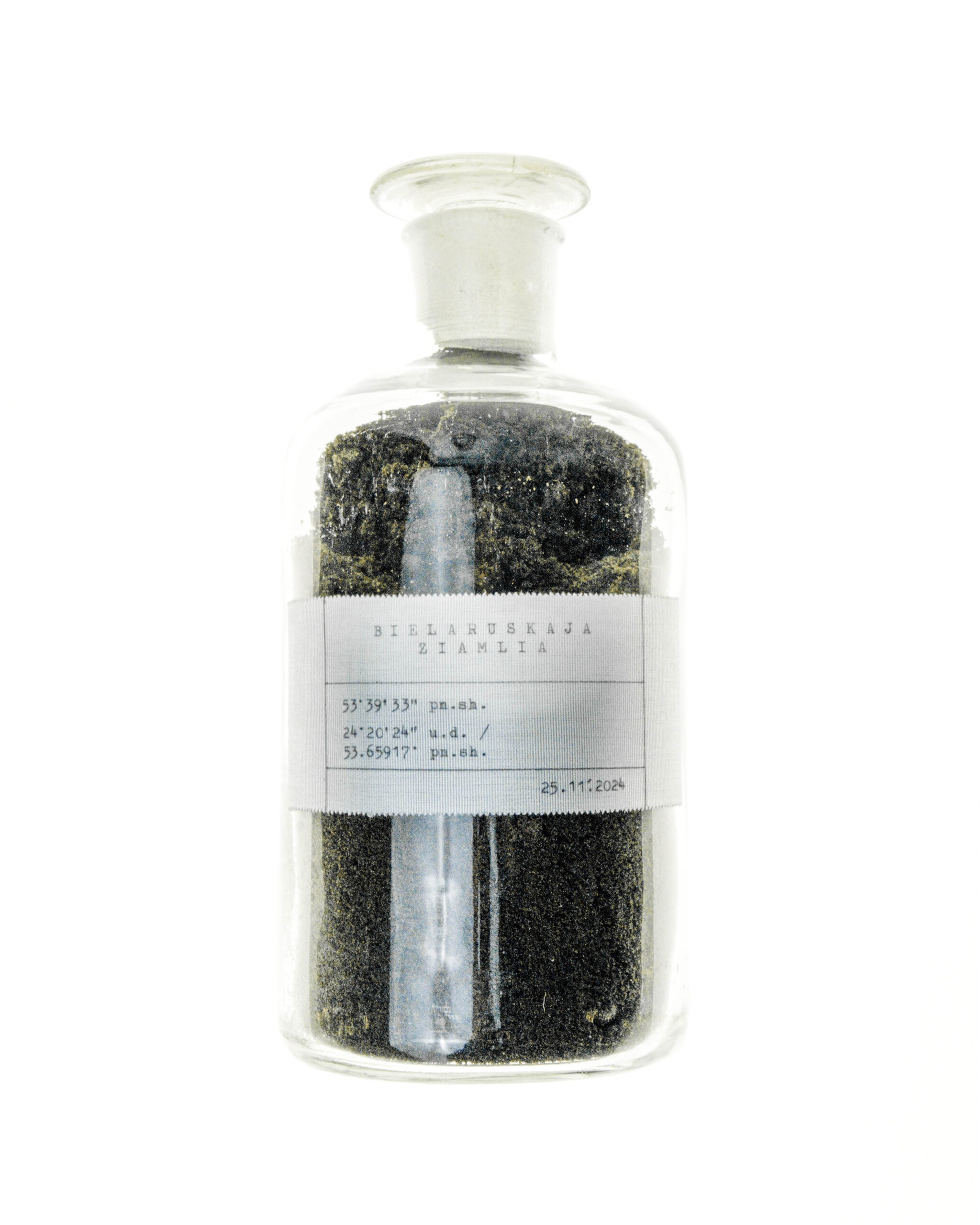
A photo from Cemra's new project called "ZIAMLIAČKA", which she worked on during her residency in Graz / 2025.
— If you had to describe this period in one word, what would it be?
— “Oniona.” This word cannot be translated — it’s important in this exact form, and it has a story. In my youth, when I was around seventeen, I thought that the word “love” was too broad and often misused. So I decided to create my own word in Russian to describe what specifically happens between a man and a woman. That’s how “oniona” was born — a fusion of “he” (он) and “she” (она). During the residency, I remembered that once I had a desire to name things in my own language, to invent, to clothe everything in my own symbols.
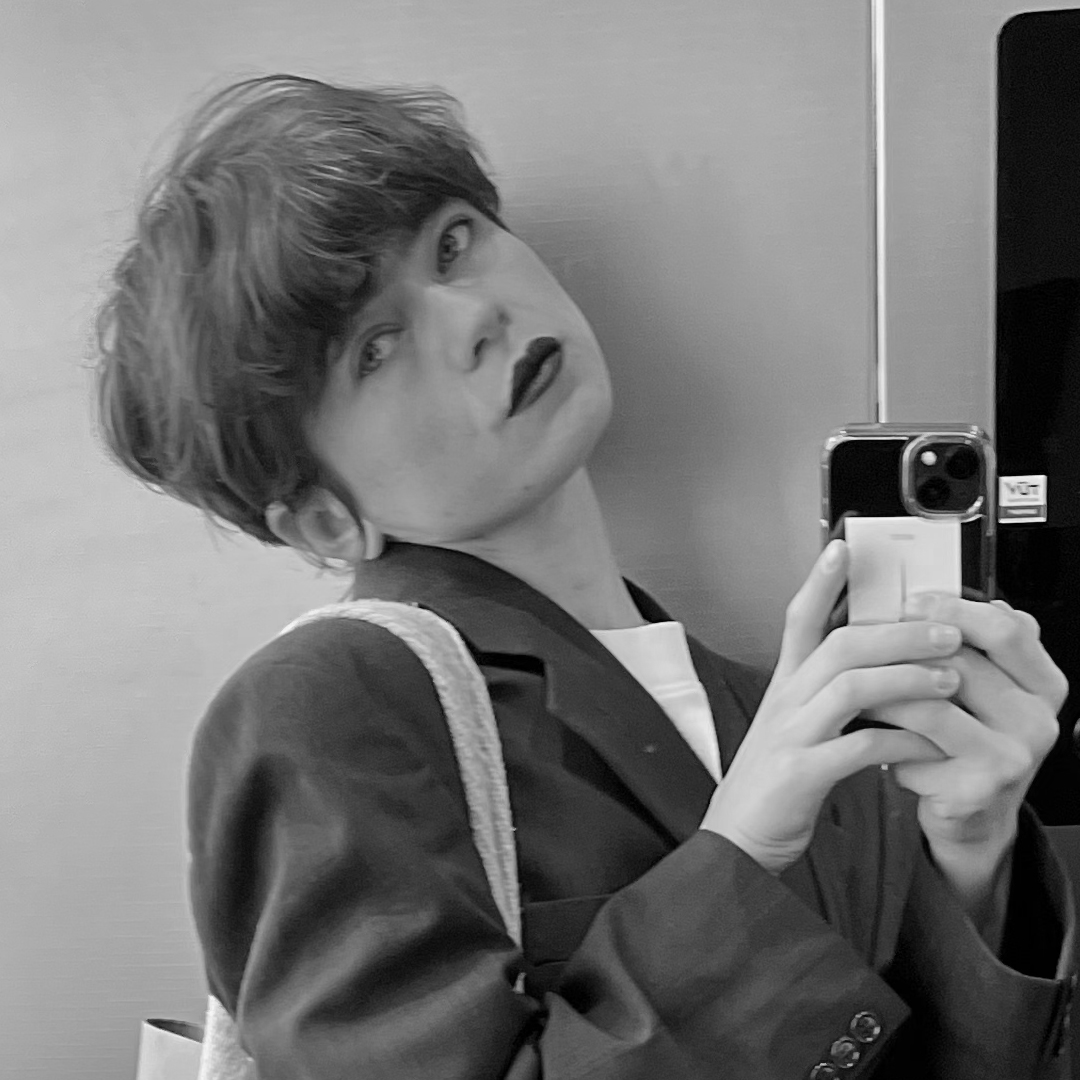
Darya Siamchuk, known to the audience under the pseudonym Сemra (translated from Belarusian as darkness), is a Belarusian artist originally from Grodno. In her work, she explores themes of trauma, memory, identity, and transformation on both a personal and collective level.
Сemra’s practice consists of creating textured, tactile surfaces using plaster bandages, resin, oil paint, pastel, and varnish on canvas. Each layer is reminiscent of a wound or scar, transforming the canvas into a sensual body. Thanks to this material language, the artist opens up a space where trauma can be acknowledged and where care can begin.
The artist currently lives and works in Warsaw (Poland).
The author of the text is Liza Mas.
Reprinting of the material or fragments of the material is possible only with the written permission of the editors.
If you notice an error or would like to suggest an addition to the published materials, please let us know.
Darya Siamchuk, known to the audience under the pseudonym Сemra (translated from Belarusian as darkness), is a Belarusian artist originally from Grodno. In her work, she explores themes of trauma, memory, identity, and transformation on both a personal and collective level.
Сemra’s practice consists of creating textured, tactile surfaces using plaster bandages, resin, oil paint, pastel, and varnish on canvas. Each layer is reminiscent of a wound or scar, transforming the canvas into a sensual body. Thanks to this material language, the artist opens up a space where trauma can be acknowledged and where care can begin.
The artist currently lives and works in Warsaw (Poland).
The author of the text is Liza Mas.
Reprinting of the material or fragments of the material is possible only with the written permission of the editors.
If you notice an error or would like to suggest an addition to the published materials, please let us know.
SHARE:
Other texts:
Other texts:

FOLLOW US
INSTAGRAM TELEGRAM TIKTOK FACEBOOK YOUTUBE
© Chrysalis Mag, 2018-2025
Reprinting of materials or fragments of materials
is allowed only with the written permission


